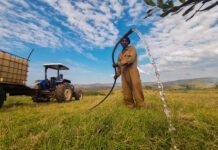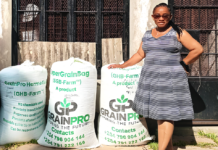
Tanzania’s President Samia Suluhu Hassan has launched the ITRACOM Fertiliser Factory, a state-of-the-art facility located in the Nala Industrial Area on the outskirts of Dodoma. The event—also attended by Burundi’s President Évariste Ndayishimiye—was hailed as a major leap toward boosting Tanzania’s agricultural future and forging regional food security.
Built at a cost of approximately $180 million, the factory stands as Tanzania’s largest fertiliser plant to date, with a production capacity of 1 million tonnes annually and plans to increase that to 1.2 million tonnes next year. Employing 1,805 people thus far and projected to create up to 3,000 direct jobs (alongside thousands of indirect roles), the facility is expected to profoundly impact Tanzania’s farming heartland.
“This is more than just a factory; it is a solution to one of the biggest challenges facing our farmers,” President Samia said during the launch ceremony on June 28, 2025. She noted that the plant will reduce reliance on imported fertilisers, spur regional trade, uplift local incomes, and enhance agricultural output.
Agriculture remains a pivotal sector in Tanzania—accounting for 70% of employment, 60% of industrial raw materials, and 30% of GDP. Yet high import costs have kept fertiliser use low across the region. The new factory, producing environmentally friendly organo-mineral fertilisers under ITRACOM’s FOMI brand, seeks to reverse this trend.
President Ndayishimiye underscored the plant’s role in strengthening Tanzania–Burundi ties. Once a refugee in Tanzania, factory owner Adriano Ntigacika returned as a major investor. “Every mouth should have food and every pocket should have money,” said Ndayishimiye, while commending the government of Tanzania for “great hospitality”.
ITRACOM’s CEO, Nduwimana Nazer, described it as one of East Africa’s largest facilities for organo-mineral fertiliser production. The plant is also capable of producing up to 100,000 tonnes of agricultural lime annually—vital for treating acidic soils.
Government backing has been pivotal. Under President Samia’s leadership, the agriculture budget surged from TZS 294 billion in 2021 to TZS 1.24 trillion in 2025. Fertiliser subsidies now exceed TZS 600 billion over four years, while initiatives enhance soil testing, irrigation, and quality seed access. Agricultural Minister Hussein Bashe remarked that domestic production could meet national demand—currently about 2.1 million tonnes annually—by 2030.
A comprehensive enabling environment—offered through land provision, tax reliefs, infrastructure grants, and regulatory support—has also driven this transformation. The Tanzania Investment Centre, TFRA, and TPDC are collaborating with investor groups like Indonesia’s Essay Group on further projects, including an ammonia-to-urea plant slated for 2029.
The factory’s strategic location in central Dodoma, supported by infrastructure such as the Standard Gauge Railway and the soon-to-open Msalato International Airport, positions it as a fertilizer hub not just for Tanzania, but for the broader East and Central African region.
Local procurement also promotes rural growth—nearly 100,000 tonnes of manure (worth TZS 15 billion) were sourced from Tanzanian livestock farmers.
Looking ahead, Tanzania is expanding its fertiliser ecosystem: Minjingu Mines & Fertiliser has tripled its capacity from 100,000 to 250,000 tonnes, and plans are in motion for a natural-gas-powered urea complex. These steps aim to deliver self-sufficiency and strengthen fertilizer availability across the East African Community and beyond.
The inauguration of the ITRACOM Fertiliser Factory signals a decisive shift, as Tanzania deepens its industrial and agricultural integration. Where once fertilizer was imported, it is now home‑grown—ushering in a future of increased productivity, job creation, and regional trade strength.







